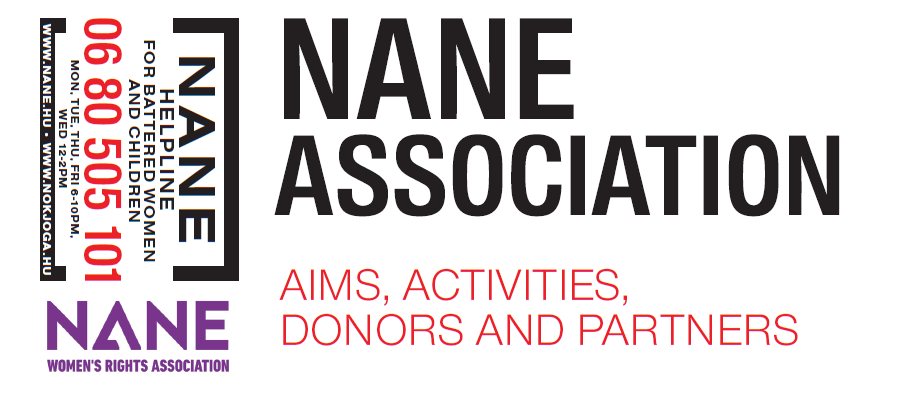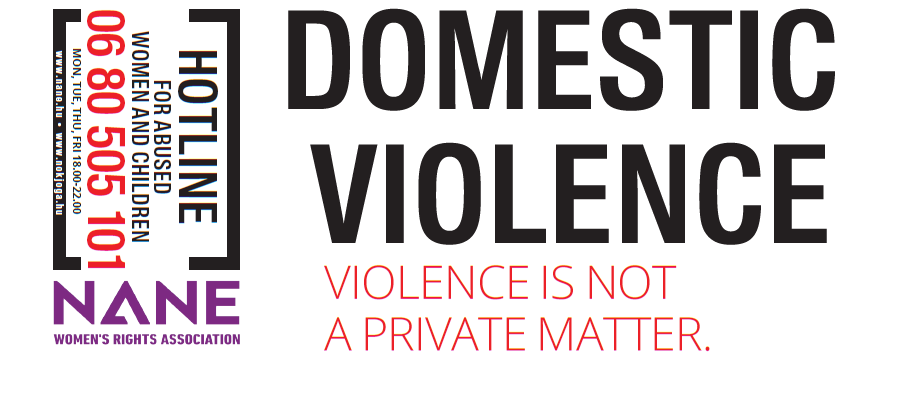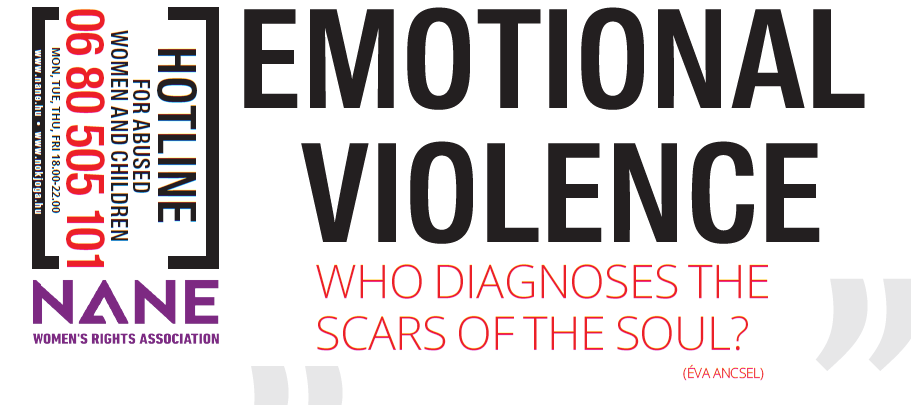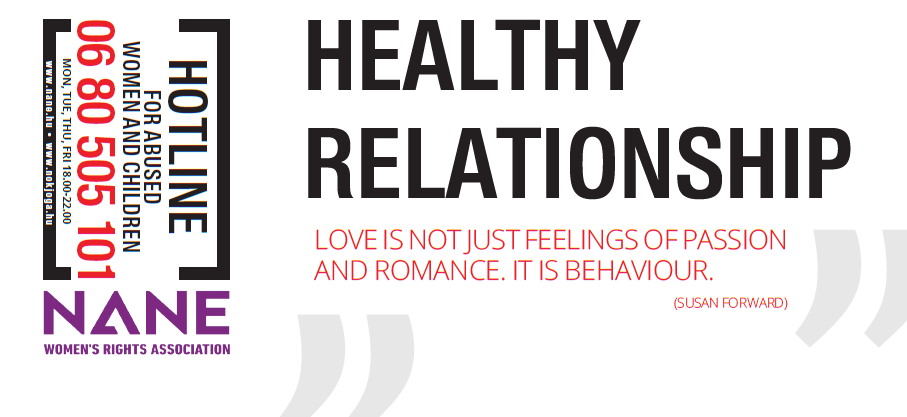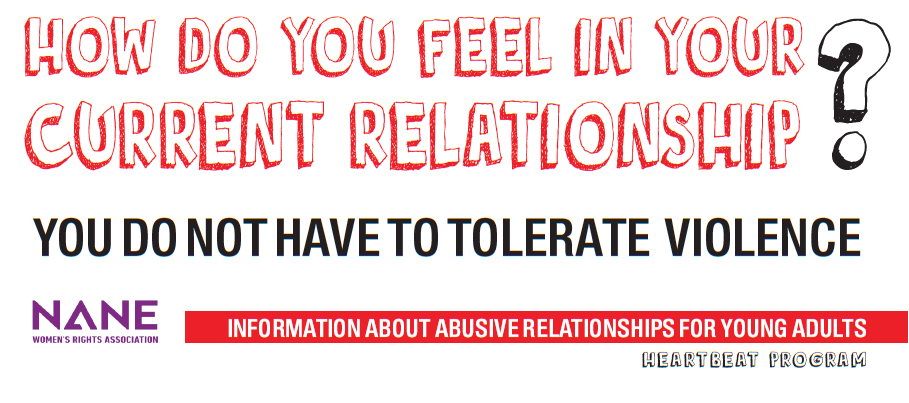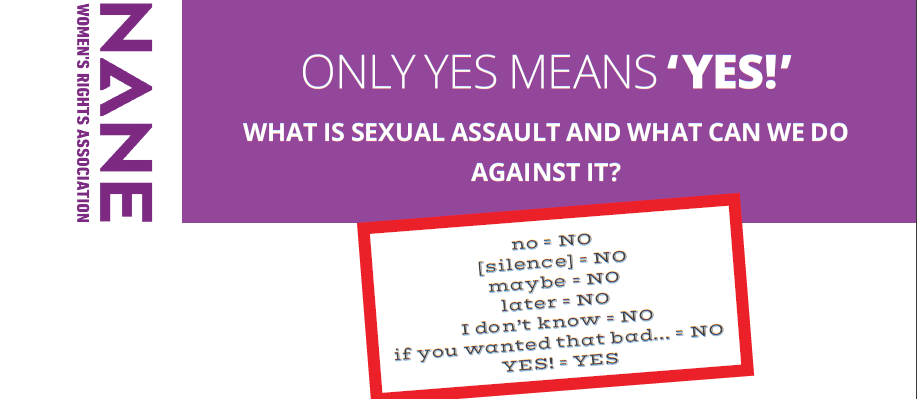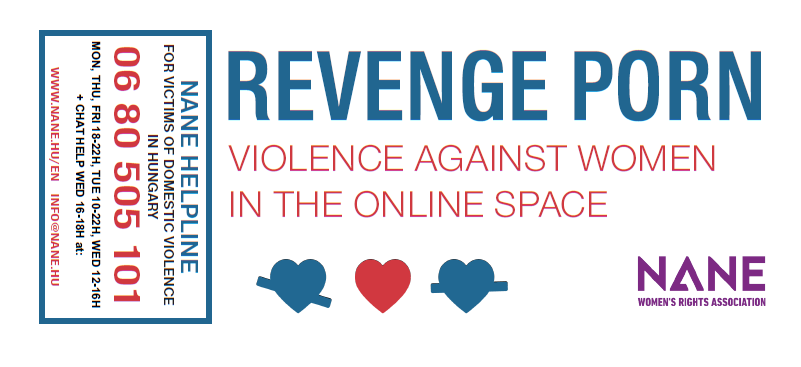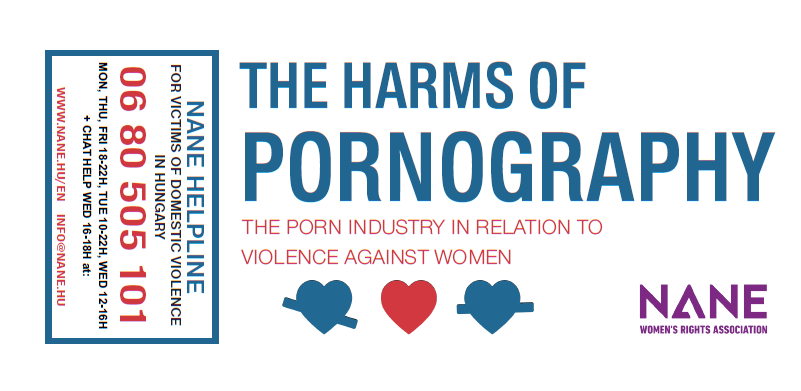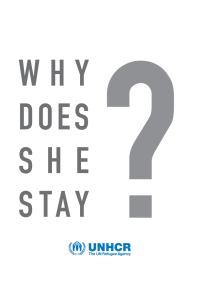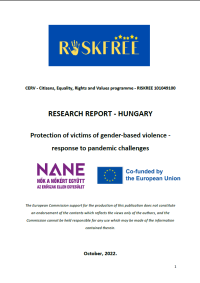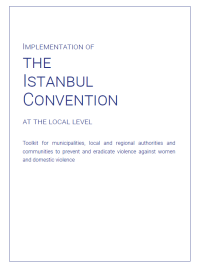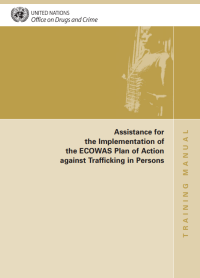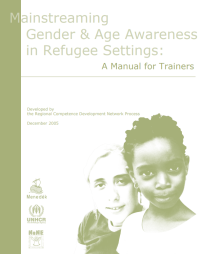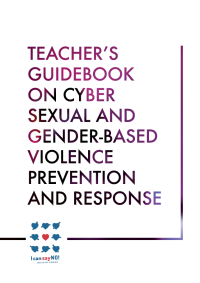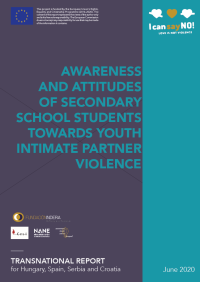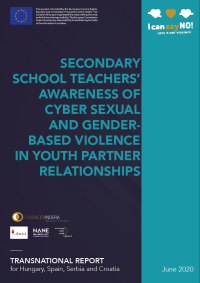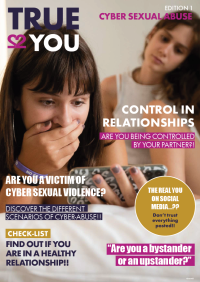Why does she stay?
RISKFREE – Violence against Women during the Pandemic
Research conducted within the framework of our EU CERV project entitled “Protection of victims of gender-based violence – Response to pandemic challenges” explored the impact of the coronavirus epidemic on women’s experience of intimate partner violence and support services in Hungary.
RISKFREE – Country report on the situation, care and risk assessment of victims in Hungary
Professional material prepared within the framework of our EU CERV project entitled “Protection of victims of gender-based violence – Response to pandemic challenges” presents international standards and obligations, as well as legislation and practice in Hungary, in connection with risk assessment in cases of violence against women. Furthermore, it draws conclusions and recommendations on risk assessment, building on the experience of battered women’s institutions and support organisations before and during the pandemic.
Implementation of the Istanbul Convention at the local level
Toolkit for municipalities, local and regional authorities and communities to prevent and eradicate violence against women and domestic violence.
Assistance for the Implementation of the ECOWAS Plan of Action against Trafficking in Persons
This Manual presents the definitions of trafficking in human beings and smuggling of migrants as well as general guidelines on investigation and prosecution of cases related to trafficking in human beings, with a focus on cooperation between ECOWAS Member States. This Manual is to be used as reference material and in training activities under the project.
Mainstreaming Gender & Age Awareness in Refugee Settings: A Manual for Trainers
This manual combines traditional and specially developed interactive gender/age training exercises and materials with the feedback and developments from the pilot event. It aims to provide a flexible resource tool for trainers who, irrespective of discipline or sector, are in a position to introduce the fundamental concepts of gender/age and the significance of mainstreaming to individuals engaged in or entering the refugee protection field – be they students, current practitioners or officials from government agencies.
YOUTH PREVENTION BOOKS & RESEARCH
TEARCHER’S GUIDEBOOK ON CYBER SEXUAL AND GENDER-BASED VIOLENCE PREVENTION AND RESPONSE
The guidebook, prepared within the regional EU REC project titled “I can choose to say no. Empowering youth, especially girls to stand up against cyber sexual and gender-based violence in intimate partner relationships” is designed o support teachers to improve their knowledge on the phenomenon of cyber sexual and gender-based violence, it’s forms, causes, and consequences, especially focusing on violence in intimate partner relationships of youth (aged 15 to 19). The guidebook provides teachers with teaching materials in the form of workshops they can use with students to raise young people’s awareness about gender, gender-based violence, cyber violence, and online safety and with practical support to improve prevention, intervention, and building a school climate less tolerant to any form of discrimination and violence.
AWARENESS AND ATTITUDES OF SECONDARY SCHOOL STUDENTS TOWARDS YOUTH INTIMATE PARTNER VIOLENCE – Transnational Report for Hungary, Spain, Serbia and Croatia
The report is based on a survey implemented within the project “I can choose to say no. Empowering youth, especially girls, to stand up against cyber sexual and gender-based violence in intimate partner relationships“. The survey was implemented in four countries by the following organizations: The Autonomous Women’s Centre (Serbia), Fundacion Privada Indera (Catalonia, Spain), Nők a Nőkért Együtt az Erőszak Ellen (Hungary) and CESI-Center for Education, Counselling and Research (Croatia).
SECONDARY SCHOOL TEACHERS’ AWARENESS OF CYBER SEXUAL AND GENDER-BASED VIOLENCE IN YOUTH PARTNER RELATIONSHIPS – Transnational Report for Hungary, Spain, Serbia and Croatia
The report is based on a survey implemented within the project “I can choose to say no. Empowering youth, especially girls, to stand up against cyber sexual and gender-based violence in intimate partner relationships“. The survey was implemented in four countries by the following organizations: The Autonomous Women’s Centre (Serbia), Fundacion Privada Indera (Catalonia, Spain), Nők a Nőkért Együtt az Erőszak Ellen (Hungary) and CESI-Center for Education, Counselling and Research (Croatia).
True2You Magazine on Cyber Sexual Abuse
This magazine is educational material for young people, teachers, youth professionals and parents about the prevention of cyber sexual abuse.
It was developed within the regional EU REC project “I can choose to say no. Empowering youth, especially girls, to stand up against cyber sexual and gender-based violence in intimate partner relationships“. The magazine offers a space to recognize what constitutes online and offline violence supports with useful skills for respectful communication and encourages standing up against peer pressure and normalized abusive behaviors. It empowers young people to build solidarity between each other and to identify one own and each other’s boundaries.
NANE HANDBOOKS
System Failure – Male violence against women and children as treated by the legal system in Hungary today
This publication of Patent Association and NANE Association presents in four studies how the judicial and social care systems work in Hungary regarding domestic violence. Social worker Fruzsina Benkő, deduces from the analysis of NANE-helpline diaries the typical mistakes social workers, lawyers, teachers and doctors make. Through precedent cases of Patent Association, lawyer Júlia Spronz presents how the legal texts and law enforcement make men’s violence against women invisible, how they keep victims away from legal actions, how they discriminate battered women. Psychologist Gábor Kuszing’s paper shows that the practice of forensic psychologist experts is biased on the part of perpetrators, as they primarily collect data suitable for acquitting abusive men and blaming victims. Judge Magdolna Czene writes that the restraining order in force since 2006 is neither quick nor effective, and it does not provide the expected protection for victims.
Heartbeat – Relationships without violence. Preventing violence in teenage relationships: a manual for schools and other youth settings
Relationships and sexual relations play an important role in the lives of young people, and unfortunately many of them suffer violence in these relationships. It has been proven that teenagers are just as likely to become victims of abuse as adults. According to statistics, one in every five women in Hungary is in/gets into a relationship during her lifetime where she regularly experiences physical violence.
NANE Association held sessions in collaboration with schools and a youth organisation during 2009-2010 on the importance of respecting others’ and one’s own gender, as well as on non-violent ways to communicate and resolve conflict. Around the same time, our partners in Spain, England, Germany and Austria held similar sessions for the same target group. We measured the impact of the sessions, the opinions of the participating young people by using a questionnaire method. The Heartbeat handbook was created on the basis of the experience of the organizations holding the sessions and the results of the questionnaires, which can also help educators and youth workers to hold sessions related to intimate partner violence at school, youth clubs, camps, etc.
The handbook provides a brief background material summarizing the most important information about youth relationships for the adult organizing/holding the sessions. This is followed by various practices using cooperative methodology on the following topics: the well-functioning and mutually respectful relationship, Intimate partner violence, support and assistance.
Power to Change – How to organize and operate self-help groups for victims and survivors of domestic violence?
The Power to change handbook is a collaborative effort by experts on violence against women and domestic violence in five countries. Thus, at the writing of this book we considered and incorporated the infrastructural features of certain parts of Europe, and we hope it can be as useful to a specialist in an institution that specializes on domestic violence as to the sole social worker in a small settlement.
The handbook includes two groups of 14-14 sessions each, one of which specifically helps women who have experienced intimate partner violence understand the nature of intimate partner violence, as well as learn new tools and alternatives to the reality of their previous relationship. The other structured group has a more general content, usually aimed at developing self-esteem, so in addition to groups of victims and survivors, it is also suitable for preventive work with young women and girls. In addition to the two structured models, we also pay attention to self-help groups operating in an unstructured, more flexible framework. The handbook also provides guidance for planning, preparation and management activities before, in parallel and after the group. In addition to summarizing competencies required for group leadership, we try to help the preparation for group leadership with a list of recommended readings in Hungarian. At the end of the book, there are also tools for organizing and leading sessions. The documents here can be used for group work immediately after photocopying, or copying/modifying the electronic copy.
Júlia Spronz – Judit Wirth: Integrated client service for victims of violence against women. The results of a pilot programme
In 2005, under the European Union’s Daphne II program, the NANE Association and the Habeas Corpus Workgroup (HCW) launched a pilot service for victims of domestic and other forms of gender-based violence, that simultaneously takes into account the clients’ needs for legal, psychological and social assistance. This publication summarizes the experience of this pilot program by describing the cases of clients involved in the so-called “integrated client care”, presenting legal policy conclusions drawn from these cases and making general and specific recommendations to practitioners, legislators and law enforcers.
Back Up the Children – Children and young people against domestic violence
Despite children’s rights and child protection provisions, many children experience domestic violence, which can be directed against the child or a parent. It is similarly traumatizing and destructive if the child is not subjected to direct violence but is “only” a witness to the abuse between their parents. Around 10-30% of school-age children face violence in their parents’ relationship. This working material provides information and methods for educators and youth workers working with children and young people aged 6-12 for processing the issue in school, youth, group sessions. In the first part of the material we can read about the theoretical foundations: basic human rights, children’s rights, intimate partner violence, and we also get guidelines for planning sessions. The second practical part contains the detailed description of the exercises that can be used during the sessions. Based on the handbook, virtually anyone can plan and hold a session on the topic for young people.
Lessons learned – Adapting and using the WAVE Training Programme on Combating Violence Against Women.
TŰZ-HELY BOOK SERIES
Our book publishing project is an independent initiative which aims to make the literature on intimate partner violence available in Hungarian translation. Even today, there are very few books in Hungary that make the knowledge accumulated by the women’s movement accessible to a wider audience in plain language. We perceive this shortcoming both in our training and in our helpline work.
In 1998, in collaboration with the Háttér Publishing House, we began selecting and translating volumes for a series running under the name ‘Fire-place books’ (in Hungarian: Tűzhely — lit. ‘hearth’). When selecting the books, we aimed to provide Hungarian women and men interested in the topic with enjoyable, interesting and awareness-raising works that describe both the theory behind women’s rights and the practice of helping victims. As we often experience a lack of academic approach to domestic violence and to women as an oppressed social group and, our series also includes publications specifically for professional groups. All volumes of the series published so far are available in bookstores or can be ordered from Háttér Publishing House.
Volumes of the series
(we are listing the original English versions of the books)
Patricia Evans: The verbally abusive relationship
Verbal abuse in relationships
We know that intimate partner violence is not an accidental, unpredictable act of anger committed by members of both sexes with equal frequency but a regular and systematic process, mostly used by men against their female partners. Because domestic violence almost always begins with a woman’s verbal abuse, the early detection and interpretation of verbal abuse can be life-saving. Although many people recognize verbal abuse in an offensive, mocking tone, we are much less sensitive to its more sophisticated manifestations.
The book helps identify more hidden forms of verbal abuse, like “humiliation”, “madness” or “forgetfulness” that victims mostly just feel and instinctively suspect rather than logically substantiate. In addition to recognition, the reader is given specific techniques to confront the perpetrator of the verbal attack, to set healthier boundaries in their relationship, or to recognize if their relationship is unsalvageable, or perhaps even physically dangerous.
There is a separate chapter on psychotherapeutic treatment of patients who live or have lived in verbally abusive relationships, and the impact of verbal abuse on children. The Hungarian translation is a revised and extended version of the first edition of 1992, published in 1996.
Who do we recommend it to?
- As a self-help book to women who want to know what has been bothering or worrying about their partners’ behaviour for a long time.
- As a self-help book to women who want to step out of a verbally-emotionally abusive relationship and want to rebuild their self-esteem.
- To psychotherapists working with battered women, either as a specialist book or as a recommended self-help book to speed up therapy.
- To outsiders, family members who know women who live in verbal/emotional abuse and want to better understand and support them.
Judith Lewis Herman: Trauma and recovery
The impact of violence from domestic abuse to political terror
The book by the well-known psychiatrist author, published in 1992, is used as a textbook at many (North )American universities that train psychologists, but it is also an important self-help book for survivors of violence due to its theme and deeply empathetic style. The book analyses the psychiatric disorder described by the DSM (Diagnostic and Statistical Manual of Mental Disorders, diagnostic manual of the American Psychiatric Association) as “post-traumatic stress disorder”, which has been extended in the literature describing psychological trauma in recent decades to women and children victims of domestic violence.
The author provides a great overview of where our current knowledge on PTSD comes from: information on soldiers fighting in wars, results of feminist studies related to domestic violence, professional experiences of working with political prisoners, prisoners of conscience and Holocaust survivors, and traditional disaster-based trauma knowledge.
She highlights the shared experiences of Holocaust survivors, incest survivors (children sexually abused by a caregiver), battered women and war veterans both in her case studies and in her theoretical approach , and proposes a specific therapeutic model for treating such patients.
The book is divided into two main parts:
Detailed description of factors predisposing post-traumatic stress disorder (explaining in a separate chapter the effects of dread, separation from people, captivity and childhood abuse) and the introduction of the author’s extended diagnosis of ‘complex post-traumatic stress order’.
Description of the three main phases of psychotherapeutic treatment of trauma survivors (building safety, remembering and mourning, reconnecting with community) and group therapy implications for trauma survivors.
‘Survivor’ or ‘victim’?
The author uses the term ‘survivor’ to refer to all those who have suffered some form of trauma, even if they have suffered the most extreme injuries and are barely able to face the challenges of everyday life. The purpose of this choice is to empower patients: by emphasising the motif of survival, the patient learns not to see him/herself as a passive, helpless victim but as a strong, independent person who has been able to survive despite all the horrors of trauma.
Who do we recommend it to?
– We highly recommend the book to all professionals working with traumatized patients or clients, as to our knowledge this topic is not part of the compulsory curriculum in Hungary.
– To psychologists
– To psychiatrists and psychiatric workers/nurses
-To professionals working in other helping professions: police officers, gynaecologists, doctors, nurses, helpline workers
– To sociologists and social workers
– To survivors of domestic traumas (survivors of childhood emotional, physical, sexual abuse, and battered women), and of other social traumas (Holocaust, war, political persecution), either in addition to psychotherapy or as a self-help book.
View content
Our activities related to the book
Basic training
Training of professionals
Bancroft-Silverman-Ritchie: The Batterer as Parent
The impact of partner abuse on parent-child relationship
The question of how to regulate children’s contact with parents who abuse their partners so that it would not lead to the damage of mother-child relationship, which is key to the child’s recovery, concerns not only professionals but society, too.
The authors have been working with abuser groups and as court-appointed experts in child custody, parental custody and contact proceedings for decades. They summarize the related literature and their own experience of more than 2000 cases of partner abuse in this book. They provide a nuanced image of abusers’ behaviour, mindsets and values, how partner abuse destroys the family, and how it relates to the risk of child abuse, including incest and neglect.
Who do we recommend it to?
To all affected, helpers and professionals. Based on the authors’ recommendations, seconded experts, authorities, lawyers, supervised contact providers, and mental health professionals working with children and their parents can assess how dangerous the partner abuser is to the child.
Lundy Bancroft: Why does he do that?
Inside the minds of angry and controlling men
This is Lundy Bancroft’s second book published in Hungarian after ‘The Batterer as Parent’.
Bancroft has been leading groups for abusive men for decades. His experiences are summarized in this book which aims to help victims recognize the early signs, techniques and roots of abuse. It provides answers to fundamental questions, such as how the abuser thinks, how he manipulates and intimidates his victim and his environment, whether he can be a good parent and whether he can change. The author talks about the nature of intimate partner violence in plain language, putting his knowledge at the service of the battered.
Who do we recommend it to?
To all battered, family members, friends and professionals who want to help.
Helen Benedict: Safe, strong, & streetwise
Self-defense for teenagers
Young people are highly vulnerable to abuse and violence coming from both adults and their own peers. This is especially true for sexual abuse. Various Western European and international statistics show that by the age of 18, one in two to four girls is subjected to some form of sexual violence. According to some Hungarian surveys, 5-10 percent of children suffer from sexual abuse. However, we also know that well-trained children and young people are less likely to become victims of abuse.
The experience of Zartbitter, an organization from Cologne that works with victims of child sexual abuse, suggests that primarily perpetrators successfully attack the adaptive, so-called ‘good’ and uninformed girls and boys, and they less often approach resilient children who were raised from an early age to trust their intuitions and protect their interests even from border crossings by adults.
Helen Benedict’s award-winning book has already provided many young people and children with information on basic self-defense strategies, especially regarding sexual violence. The simple pointers on general safety and the easy-to-understand explanations of the causes, dangers and self-defense tactics of the most common forms of violence against young people make this otherwise difficult and difficult-to-teach topic a compellingly informative book. The main chapters of the book detail the most common emergencies at school, at home, on the street, on public transport and at parties, and how young people can protect themselves and their friends in these situations.
The book empowers young people on two levels: on one hand, it specifically introduces them to their rights, in particular, with regards to the rules of partnership that are binding on both parties. Safety experienced in sex life is an important part of integrity, as anyone who is able to have sexual self-determination and can protect their boundaries is more likely to be able to do the same in other areas of their lives. Furthermore, in addition to rights, the author teaches readers the three simplest methods of self-defense: shouting, speaking and running, as well as some basic self-defense tricks to make the perpetrator temporarily harmless.
It is a readable, awareness-raising book that can be beneficial not exclusively to young people. The appendix in the Hungarian version contains useful information about Hungarian support institutions.
Who do we recommend it to?
– To girls and boys who want to know more about prevention and self-defense
– To young people at particular risk of sexual violence or abuse
– To parents who want to know how to effectively and realistically warn their children about the danger of sexual violence and abuse
– To parents whose children have had or are afraid of having sexually abused their child
– To educators and other professionals working with children and young people


